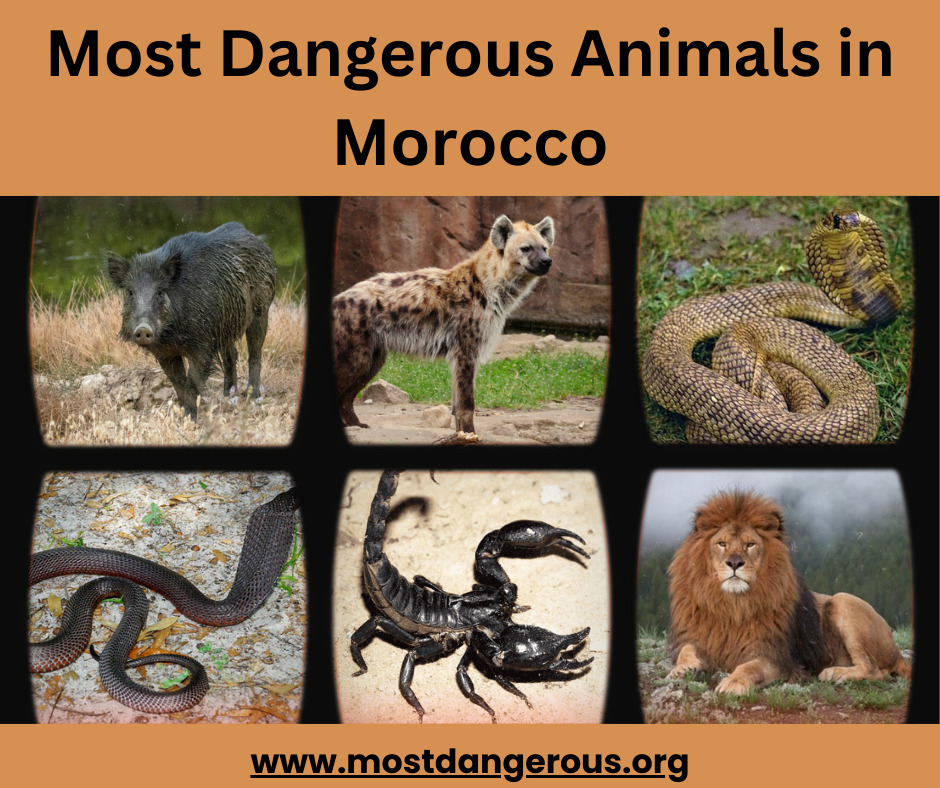Most Dangerous Animals in Morocco.
Morocco, with its diverse landscapes ranging from the Sahara Desert to the rugged Atlas Mountains and the lush coastal regions, harbors a fascinating array of wildlife.
However, amid this natural beauty, lie creatures that command respect and caution due to their potential danger.
From venomous snakes to powerful predators, Morocco is home to some of the most formidable animals in North Africa.
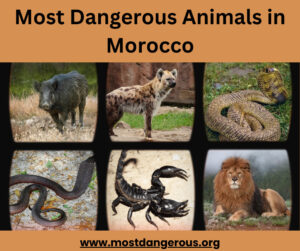
In this article, I will look at Morocco’s diverse wildlife and highlight ten of the most formidable creatures that you may encounter in various regions of the country.
10 Most Dangerous Animals in Morocco
1. Atlas Mountain Viper (Vipera monticola)
Slithering among the rocky slopes of the Atlas Mountains, the Atlas Mountain Viper is one of Morocco’s most venomous snakes.
With its cryptic coloration blending into its surroundings, encounters with this viper can be deadly.
Its venom, potent enough to cause severe tissue damage and even death if untreated, makes it a creature to be wary of during treks in the Atlas wilderness.
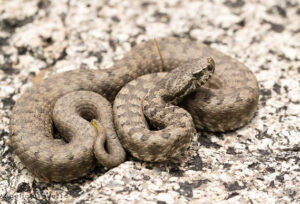
2. Scorpions
Morocco is home to several species of scorpions, including the highly venomous Androctonus australis, commonly known as the fat-tailed scorpion.
Found in arid regions across the country, these nocturnal arachnids pose a significant threat to humans, with their venom capable of causing intense pain, respiratory failure, and, in severe cases, death.
Caution is advised when camping or hiking in areas where scorpions are known to inhabit.
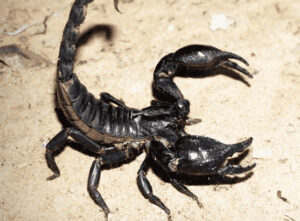
3. Leopard (Panthera pardus)
Although sightings are rare due to habitat loss and hunting, leopards still roam the remote forests and mountains of Morocco.
These stealthy predators are known to occasionally prey on livestock, and in rare instances, attacks on humans have been reported.
While the likelihood of encountering a leopard in the wild is slim, it’s essential to exercise caution, particularly in regions where they are known to exist.
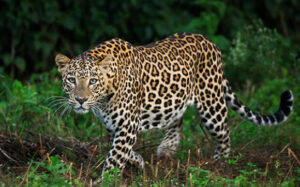
4. Moroccan Cobra (Naja haje legionis)
Found in the drier regions of Morocco, the Moroccan Cobra is a highly venomous snake capable of delivering potent neurotoxic venom through its fangs.
Encounters with this snake are infrequent but can be deadly if not treated promptly.
Like many venomous snakes, the Moroccan Cobra plays a crucial role in its ecosystem but demands respect and careful avoidance to prevent potentially fatal encounters.
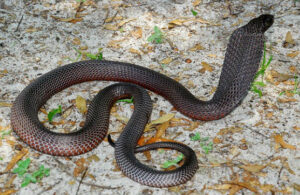
5. Wild Boar (Sus scrofa)
While not inherently aggressive towards humans, wild boars can pose a danger due to their size and defensive behavior, especially when cornered or protecting their young.
Found in forests and scrublands across Morocco, these powerful animals can inflict serious injuries with their sharp tusks and should be approached with caution, particularly in remote areas.
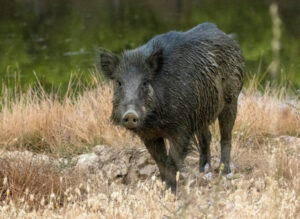
6. Atlas Lion (Panthera leo leo)
Historically widespread across North Africa, the Atlas Lion, a subspecies of the African lion, now exists only in isolated pockets of the Atlas Mountains.
While encounters with these majestic predators are exceedingly rare, their sheer size and strength make them formidable animals deserving of respect.
Conservation efforts aim to protect the remaining population and mitigate potential conflicts with humans.
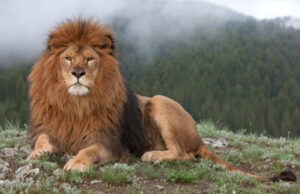
7. Horned Viper (Cerastes cerastes)
The horned viper is a venomous snake commonly found in Morocco’s desert regions, where it blends seamlessly with its sandy surroundings.
Named for the distinctive horns above its eyes, this snake’s venom contains potent cytotoxins and neurotoxins.
A bite from the horned viper can cause severe pain, swelling, tissue necrosis, and potentially life-threatening complications such as organ failure if left untreated.
Encounters with this species are infrequent due to its cryptic nature, but caution is advised when traversing desert terrain where it may reside.
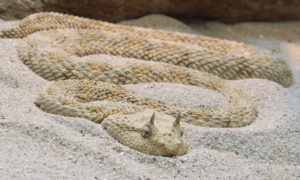
8. Spotted Hyena (Crocuta crocuta)
Spotted hyenas are formidable predators found in various habitats across Morocco, including savannas, grasslands, and woodlands.
While they primarily scavenge for food, hyenas are also skilled hunters and possess powerful jaws capable of crushing bones.
Encounters with hyenas can turn dangerous, particularly in rural areas where conflicts with humans or livestock may occur.
Despite their reputation as scavengers, hyenas are fiercely territorial and can exhibit aggressive behavior if they feel threatened.
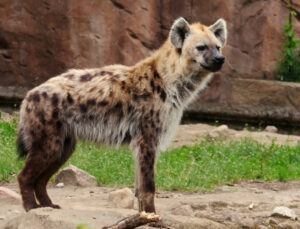
9. Egyptian Cobra (Naja haje)
Similar to the Moroccan Cobra, the Egyptian Cobra is another venomous snake found in Morocco’s arid regions.
Recognizable by its hooded appearance and distinctive markings, the Egyptian Cobra possesses potent neurotoxic venom, which can cause paralysis and respiratory failure in its prey.
Encounters with this species are rare but can be dangerous, particularly if provoked or startled.
Like other venomous snakes, the Egyptian Cobra plays a vital role in its ecosystem, but caution should be exercised to avoid potentially lethal encounters.
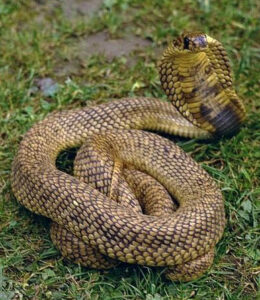
10. African Elephant (Loxodonta africana)
While not native to Morocco, African elephants may occasionally venture into remote regions bordering countries with elephant populations, such as Algeria or Mali.
These massive creatures, known for their size, strength, and intelligence, can pose a significant threat if encountered unexpectedly.
While African elephants are typically peaceful herbivores, they may become aggressive if they feel threatened or if their habitat is disturbed.
Encounters with elephants require caution and respect for their space to ensure the safety of both humans and animals.
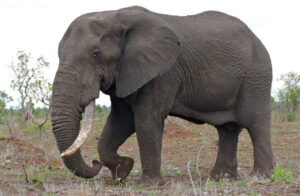
Wrapping up
While Morocco’s wildlife offers a wealth of natural beauty and biodiversity, it’s essential for residents and visitors alike to be aware of the potential dangers posed by certain animals.
Respect for these creatures’ habitats and adherence to safety guidelines can help mitigate risks and ensure harmonious coexistence with Morocco’s most dangerous wildlife.
ALSO READ:
- Most Dangerous Animals in Kentucky: A Guide to its Most Hazardous Wildlife
- 5 Most Dangerous Social Media Challenges You Should Know About
- Top 10 Most Dangerous Drugs in the World: Unveiling the Substances That Pose the Greatest Risks
- The Top 10 Most Dangerous Ocean Animals: Exploring the Depths of Danger
